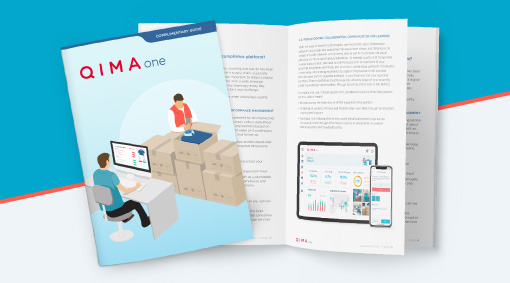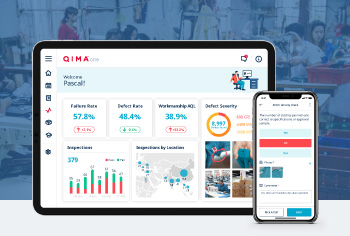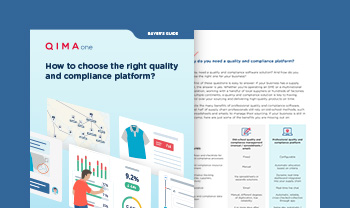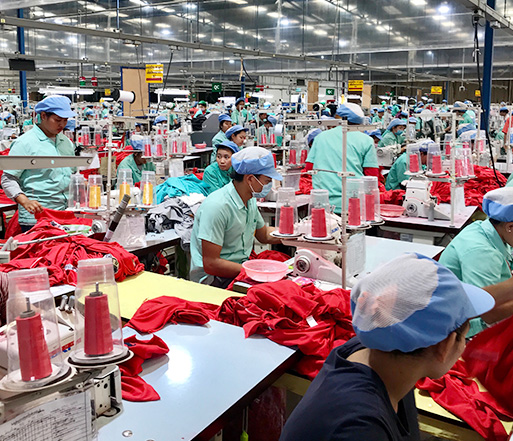
Articles
Software Enhanced Supply Chain Efficiency Metrics

Articles
Software Enhanced Supply Chain Efficiency Metrics
Articles
Software Enhanced Supply Chain Efficiency Metrics

Restez informé des dernières informations des chaînes d'approvisionnement.
Supply chain efficiency metrics should not be seen as a load of equations piled onto an already sizable amount of data.
As complicated as they first appear, supply chain efficiency metrics actually simplify production assessment by gathering, organizing, and converting reams of daily data into valuable answers to your business's overall performance questions.
What makes supply chain efficiency metrics so effective for business?
We will explore what the most useful metrics have in common, as well as look at specific metrics that are valuable to variant aspects of production--from inventory and production management to shipping, money movement, and quality control.
What Makes a Supply Chain Efficiency Metric Effective?
There are significant differences between the nearly two dozen commonly used metrics, simply because they cover so many different aspects of production and distribution.
That being said, all effective metrics contain similar qualities.
Easy to Understand -- The function of a useful metric can be explained in a simple sentence or two, and its importance should be evident.
Quantitive -- As well as being simple to explain, a useful metric can be summed up in one or just a few concrete numbers--numbers that can be compared to both past performance results as well as future targets.
Focused on Important Measurements -- A useful measurement is one that sums up a particular aspect of performance, but can also provide insight into how neighboring processes can be affected.
Encouraging of Corrective Behavior -- Whether a measured result indicates that a production area is performing well or falling short, it should motivate responsible managers to either bring up their level of production or build on their current success through innovative ideas.
Based on Consistent Collection and Analysis -- Although there are countless forms of data that can be collected, consistent data types, sources, and collection methods will give your automated analytical tools the information they need to produce accurate measurements.
Supply Chain efficiency metrics that turn Big Data into easy-to-read indications of how your supply chain is performing--and where improvements can be made--will provide your business with real benefits.
Notable Advantages of Supply Chain Metrics
As we speak, companies are gaining competitive advantages across the board through the right combination of efficiency metrics.
They are doing so because metrics allow managers and divisions to:
- Pinpoint current inefficiencies (quality defects, stagnate inventory, delivery delays, etc.),
- Determine likely root causes, and
- Develop corrective action plans that are measurable against current performance results.
Valuable Time Saved
Additionally, automated data collection, organization, and analysis save supply and distribution managers valuable time by taking the often error-prone data drudgery out of their hands and replacing them with polished and updated KPI's.
With valuable data and time to act on it, on-site managers can focus on directing their employees and inspectors towards more efficient and effective production ends.
With the number of possible supply chain efficiency metrics that can be deployed, it is worth asking which key metrics are most beneficial.
Master these 6 strategies to save your brand loyalty!
Learn now!
Master these 6 strategies to save your brand loyalty!
Learn now!Which Key Metrics are Worth Tracking?
The most important metrics to a company's success will vary depending on the nature and makeup of their operation and industry. Some companies may pay more attention to transglobal shipping challenges, while others are dependent on difficult-to-source raw materials. Applied metrics should reflect these challenges.
However, no matter which metric a company considers to be the most important for their business, a balanced focus on every aspect of production will best drive profitability, innovation, and growth.
Roughly speaking, balanced metric tracking means applying these proactive measures to production and inventory management, shipping and delivery management, money monitoring, and quality and compliance.
Here are some key metrics that address each of these aspects.
Supply Chain Efficiency Metrics for Production and Inventory Management
Supply Chain Cycle Time -- The sum of the longest possible time for every stage of production, from material procurement to product delivery.
Inventory Days of Supply -- The time it would take to run out of a supply or a product if it was not replenished.
Both of the above metrics provide insight into the overall health of your supply chain.
Inventory Turnover Ratio (ITR) -- The number of times inventory has been sold and replenished over a given period.
Fill Rate -- The percentage of a customer order that can be immediately filled with available inventory.
Inventory Velocity -- A projectional metric that compares current inventory to anticipated customer demand.
Taken together, these inventory metrics provide a balanced perspective of both current operational realities and future possibilities that can foster smarter production and reduce the accumulation of stagnant, or 'dead', inventory.
Metrics for Shipping and Delivery
Perfect Order Rate -- A metric flexible beyond measuring accurate customer delivery. It can be applied to internal supply orders, warehouse pick-up errors, and even the accuracy of supply procurement forecasting for anticipated customer demand.
Freight Bill Accuracy -- Another error-rate metric aimed at ensuring greater freighting accuracy. Invoice errors for pricing, weight, and additional product information can all be tracked.
On-Time Shipping Rate -- Customer satisfaction fulfillment depends heavily on your ability to deliver an order on or even before a promised delivery date. Measuring the number of order lines delivered on time against the total number of order lines will give you a sharp indication of how consistently you are providing positive customer experiences.
Metrics for Money Monitoring
Cash to Cash Cycle Time (CCC) -- A CCC measures the average time from when a business pays its suppliers to the moment they collect payment from a customer.
Days Sales Outstanding (DSO) -- Narrower in scope, a DSO measures the average time between a confirmed sale and the collection of payment from the customer.
Both of the above metrics are important for reducing the amount of time that money is tied up by current collection processes--because businesses know that inefficient money flow slows potential growth.
Average Payment Period (APP) for Production Materials -- Measures the time it takes to pay for production materials provided by suppliers. By reducing APPs, companies stand to gain advantages such as increased discounts offered by larger suppliers happy to retain your business.
Measuring Production Quality Inspections
End-to-end production efficiency can take companies a long way towards goals of profitability and sustainable growth. However, ensuring complete customer satisfaction can only be done with high-quality goods.
That is why a monitoring plan should include complete supply chain mapping and real-time reports that cover:
- Product quality failure and defect rates;
- Compliance monitoring (for banned substances, labeling, and packaging deficiencies, etc.); and
- Delivery tracking to ensure your products are protected in transit.
At this very moment, thriving businesses are using a balanced array of supply chain efficiency metrics to gain valuable decision-support data. And they are doing so through superior decision-support technology.
How Can QIMAone Help?
QIMAone's end-to-end quality and compliance software can remove the blindspots from scattered and complex supply chains, as well as the guesswork behind operational decisions.
And it does so through detailed mapping, data-driven analysis, real-time inspection monitoring, and clear communication channels so that all the inherent challenges to efficiency can be anticipated and dealt with quickly--and your production teams can focus on delivering high-quality merchandise.
Our platform is supported by over 15 years of testing, inspection, and certification (TIC) service expertise, and our available library of quality control inspection templates allow you to standardize your quality control checks for consistent and quantifiable results.
Supply chain efficiency metrics work best when they are simple to use, quantifiable, and accurate. So too is the software that can deliver these metrics.
Learn more about QIMAone applications by scheduling a demo today.
Articles populaires
Plan d'actions correctives 101 : Votre guide complet pour améliorer la qualité dans votre chaîne d’approvisionnement
Les avantages d’une chaîne d’approvisionnement pilotée par des données
6 avantages essentiels de la visibilité de la chaîne d'approvisionnement
Comment mettre en œuvre un système de gestion de la qualité | QIMAone
Simpli Home : garantir la qualité et la conformité de ses produits grâce à la digitalisation de sa chaîne d'approvisionnement
7 manières efficaces d’améliorer votre système de gestion de la qualité
Supply Chain Visibility: Complete Guide for Supply Chain Managers
Renforcez votre contrôle qualité grâce aux indicateurs de la performance des fournisseurs


























